Text And Photos by Henrylito D. Tacio
For thousands of years, rice (known in the science world as Oryza sativa) has been part of the human diet. Historical evidence suggests that rice may have been produced and consumed up to 10,000 years ago.
“This, alongside its current global status as the world’s most important human food, makes rice production responsible for feeding more people over a longer period than any other crop,” said the Laguna-based International Rice Research Institute (IRRI) in a statement.
In the Philippines, rice is the country’s staple food, along with fish. “If we did not have rice, our deepest comfort food, we would probably feel less Filipino,” said the late food columnist Doreen Fernandez.
On average, Filipinos consume 114-120 kilograms of rice per capita per year. That’s almost double the world average of 65 kilograms per capita per year, according to Dr. Eufemio Rasco, Jr., former director of the Philippine Rice Research Institute (PhilRice).
Filipinos are indeed rice-eating people. It’s no wonder why they observe the National Rice Awareness Month (NRAM) every November pursuant to Presidential Proclamation No. 524, s.2004.
The Philippine Rice Research Institute (PhilRice), a line agency of the Department of Agriculture (DA), is urging the public “to consume healthier rice produced by Filipino farmers in the month-long celebration, which kicked off last November 8.
“The celebration raises awareness on the importance of healthier forms of rice that are locally produced such as pigmented and brown rice with the theme, ‘Be RICEponsibly healthy,’” said PhilRice, which led the celebration.
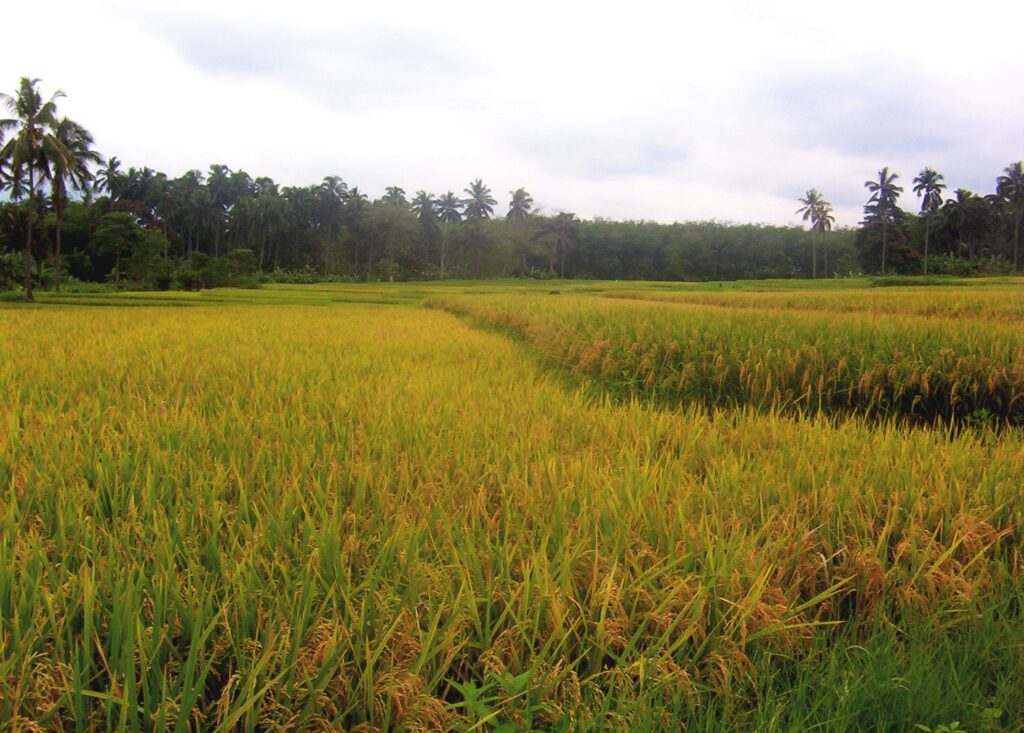
Matured rice 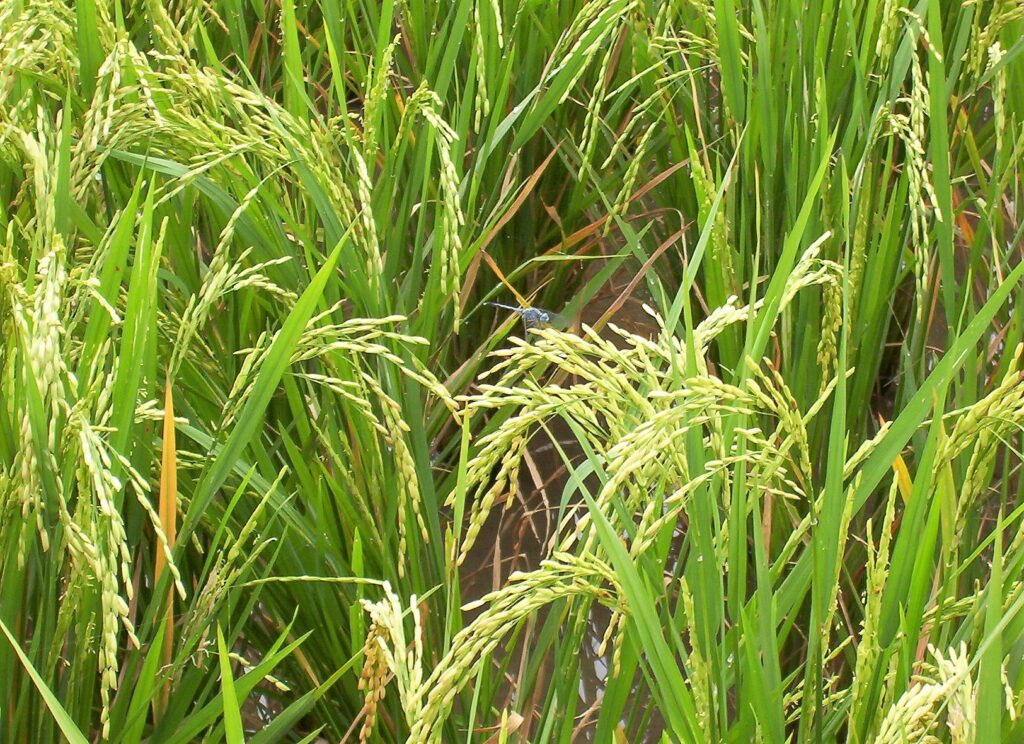
Rice crop 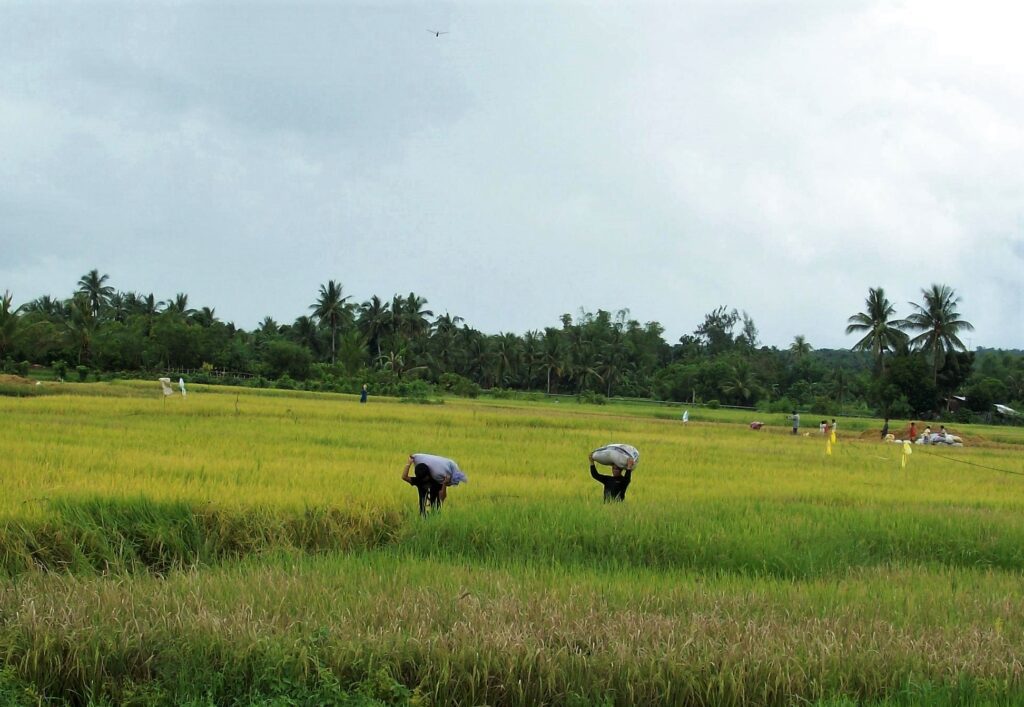
Rice harvesting
According to the Bureau of Agricultural Statistics (BAS), Filipinos spend more on rice than any other food. A BAS survey showed that Filipinos, especially those from low-income households, are depending solely on rice more than ever for their daily dietary energy supply and dietary protein because it remains the most affordable food in the country.
What’s in the rice?
Nutritionists claim rice contains carbohydrates, protein, minerals, vitamins, and fiber. Most of the white rice available in the supermarket is enriched, which means it is supplemented with iron, niacin, and thiamine.
PhilRice’s Dr. Marissa V. Romero, a food scientist, said that the health benefits of rice depend on its type.
“White or milled or polished rice is a good source of carbohydrates that provide the energy needed in our daily functions. It also contains 6-10% protein. Unfortunately, this kind of rice has a relatively high glycemic index (GI), which indicates a faster conversion of carbohydrates to sugars, particularly glucose,” she explained.
Dr. Romero recommends the consumption of brown or unpolished rice as it has more fiber, minerals, and vitamins, particularly B vitamins. Brown rice also has a lower GI than white rice.
“This type of rice is rich in nutrients because its bran is kept intact. Thus, its consumption could help prevent obesity and the onset of lifestyle diseases, as shown by some clinical studies,” she said.
Stable supply
“Any country in the world, if it can produce its staple locally, would do it because it’s difficult to depend on the world market for your staple’s supply,” said Dr. Frisco M. Malabanan, DA rice program consultant.
Although the Philippines is basically an agricultural country, it has not been self-sufficient in rice. In fact, the country is currently the world’s major importer of rice. There are several reasons for this. Yield growth and production for the last two decades have been minimal, and at times even stagnated or declined, resulting in increased importation.
This is the reason why the Rice Tariffication Law (RTL) was passed in 2019 (Republic Act No. 11203) which liberalizes the importation, exportation, and trading of rice. It resulted in lower prices of palay and retailed rice.
However, in some sectors, RTL is not the answer to the rice problem in the country. Planting more rice for Filipinos is an option that should have been pursued. A looming world rice supply crisis is in the offing as Vietnam, the country’s main source of rice is starting to import rice from India.
Hybrid rice
To avert such a crisis, the agriculture department has targeted a hybrid rice area of an unprecedented 1.2 to 1.3 million hectares for the crop year 2022 after a lull in hybrid planting as it aims to beef up food security amid the continuing coronavirus disease 2019 (COVID-19) pandemic.
A news report said that at least 700 hectares of hybrid rice are being readied for the dry bumper season of 2022. That leaves around 500 to 600 hectares for the less anticipated rainy season, but still, a big area compared to previous years.
“For our third year now, we have aggressively pursued hybrid rice planting. That is the reason why we have been able to attain the highest level of rice production this year. With hybrid rice, you’re sure to automatically harvest an additional 1.52 metric tons per hectare versus inbred,” said Malabanan.
For the record, the Philippines posted a rice harvest of 19.44 million metric tons in 2020 from 18.81 million metric tons in 2019.
But there’s a hitch: the DA budget for the food security program for 2022 has yet to be assured for the hybrid rice program to sustain. “The budget of the DA for food security has yet to be approved. It’s still being discussed in the Senate,” said Malabanan.
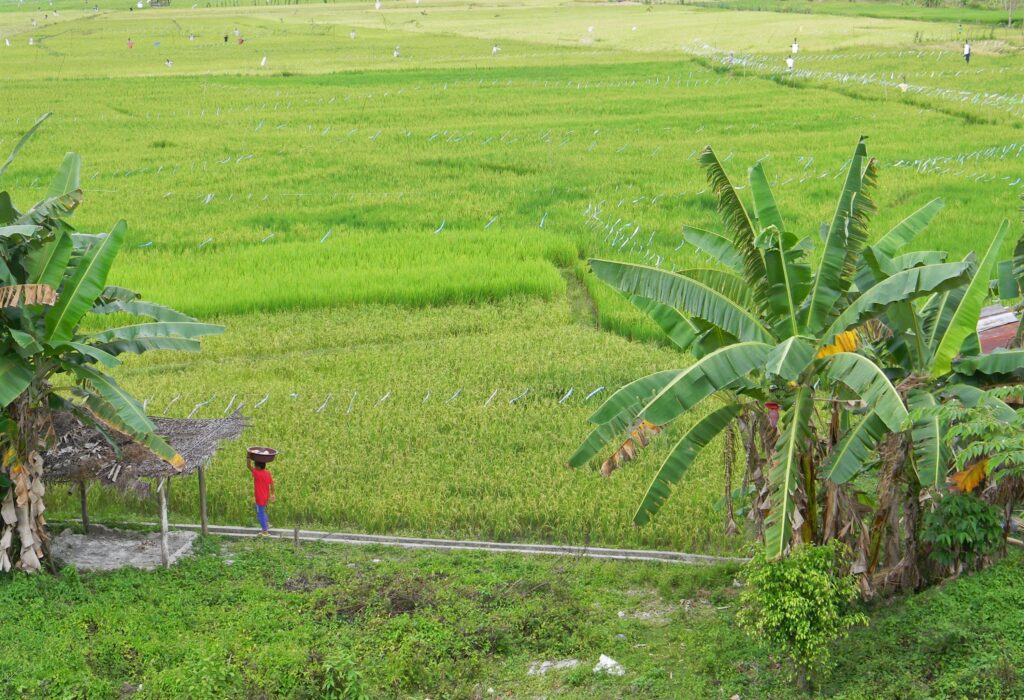
Rice farming 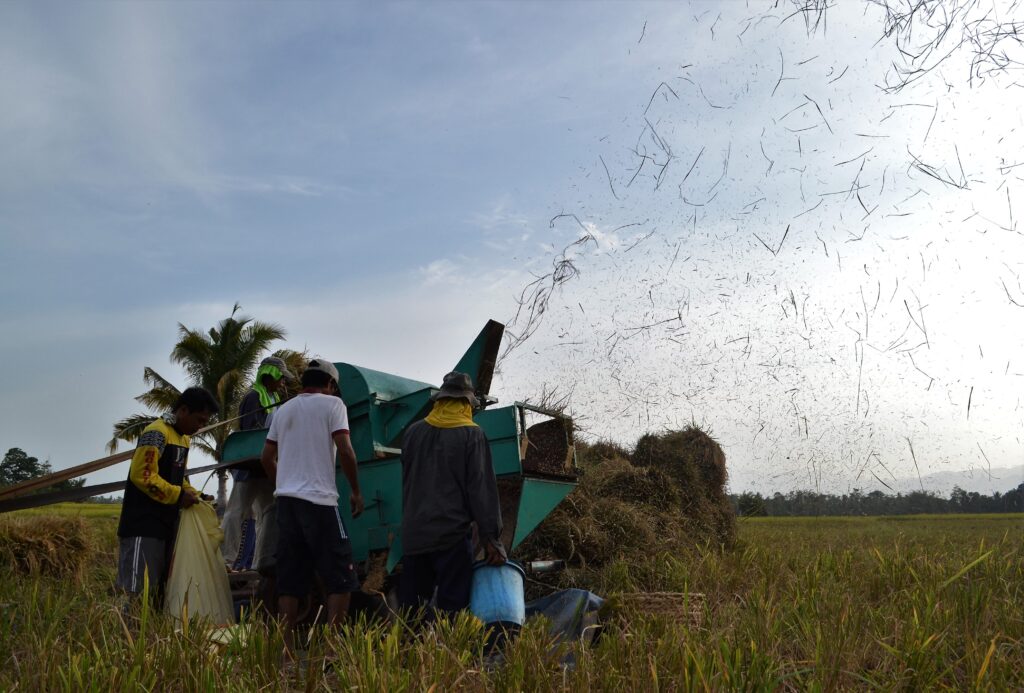
Rice segragation
Private seed growers have committed to supply DA with the needed hybrid rice seeds. They are readying the rice area, particularly involving DA’s rice clustering program. The clustering program consolidates a hybrid rice area of at least 100 hectares, particularly in 15 priority provinces.
“We assure the government of our support for this public partnership program. It will be the key to our goal for food sufficiency and food security,” said Rice Board President Recher Ondap. “We hope to be assured of the government’s budget allocation as many farmers have started land preparation for the dry season 2022. Budgetary support should not only be for this rice clustering program but for the entire food sufficiency and resiliency program.”
The Rice Board has long been supporting DA’s hybrid rice program. In particular, its private seed growers have consistently participated in the yearly National Rice Technology Forum (NRTF). It is a competition for the highest rice yield administered by DA and PhilRice.
The seed companies provide the needed technical support to farmers and guide them on the proper management of their varieties. “The Rice Board adheres to this provision,” Ondap said. “In fact, seed companies are employing more technical people to better facilitate the transfer of hybrid rice technology to farmers.”
As they are expected to churn out high yields, these hybrid rice farms should raise the country’s food self-sufficiency. They should reduce rice imports now reaching some two million metric tons annually. This program should also reduce production costs and increase the income of rice farmers.
Game-changing strategies
Meanwhile, rice stakeholders need to collaborate to develop game-changing strategies for the rice sector in the new normal, said Dr. Mercedita A. Sombilla, undersecretary for regional development of the National Economic and Development Authority (NEDA), in her speech during the Ugnay Palay: 33rd National Rice R4D e-conference.
“As the government continues to develop strategies in the rice industry and put in place necessary policy reforms, we need assistance from our rice science experts who relentlessly provide sound policy recommendations to the decision makers. Collaboration among rice stakeholders is likewise important in this endeavor, particularly in implementing our development plans,” she said.
According to Sombilla, the rice sector is facing many challenges, especially amid the pandemic.
“The sector remains vulnerable to the impacts of climate change. We [also] have yet to overcome the long-standing issues that continue to hamper agricultural productivity such as low adoption of new and better technologies and the lack of machinery and post-harvest facilities,” she explained.
She said that another challenge is effectively linking research for development (R4D) to policy formulation exercises and development planning, which will be implemented on the ground.
In project implementation, Dr. Rex L. Navarro, technical expert in agricultural extension, said that the provincial, local government units (LGUs) play a very important role.
“The [provincial LGUs] are the best implementation units because they know the situation of farmers in their locality better,” Navarro said.
To empower provincial LGUs, the DA is transitioning to the Province-led Agriculture and Fisheries Extension Systems (PAFES) – a strategy where provinces will serve as extension hubs that synchronize agricultural plans and programs.
The DA said that efforts to strengthen the delivery of extension services to farmers are also in anticipation of the Mandanas-Garcia ruling set to take effect in January next year, which will give LGUs a bigger share from national taxes.
As the country celebrates NRAM, PhilRice reminds the public to avoid wastage to help achieve rice security. The 2018 Household Food Consumption Survey of the Food and Nutrition Research Institute showed that a household wastes 72% or 66.8 grams of cereal products and cereals, including rice, on a plate.

